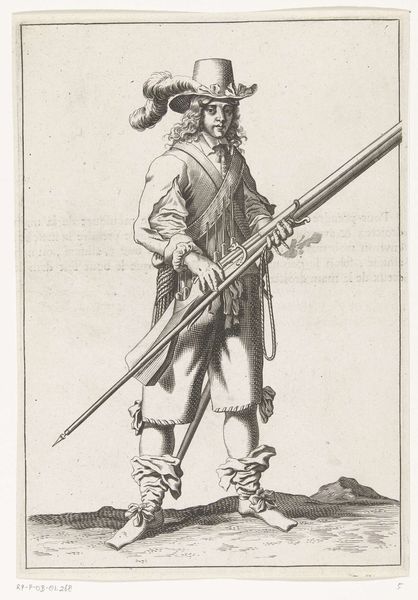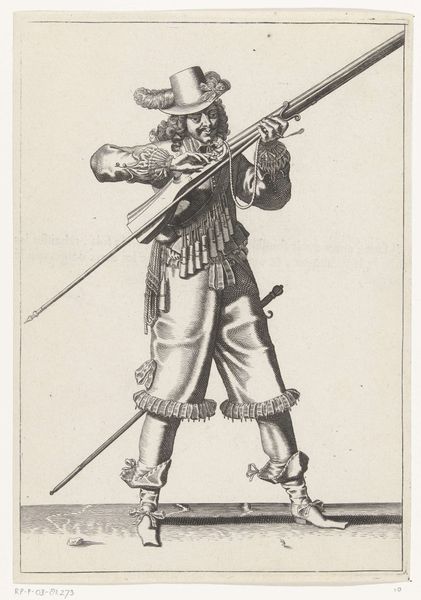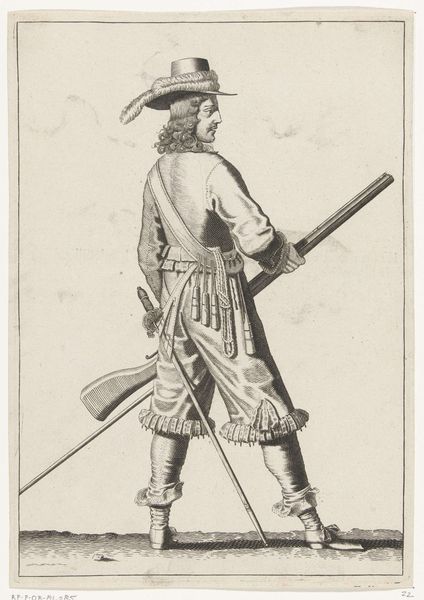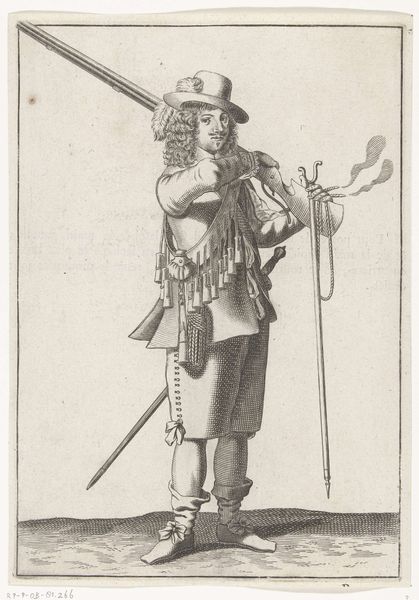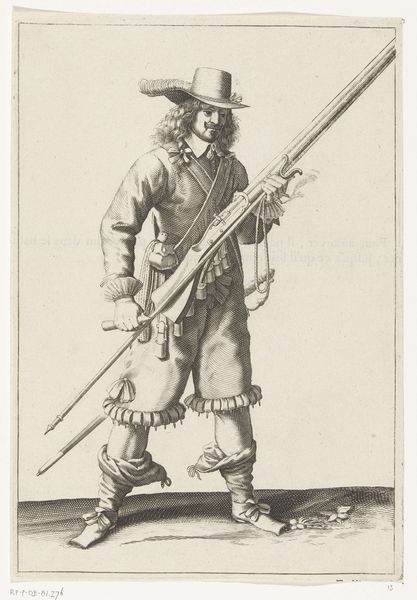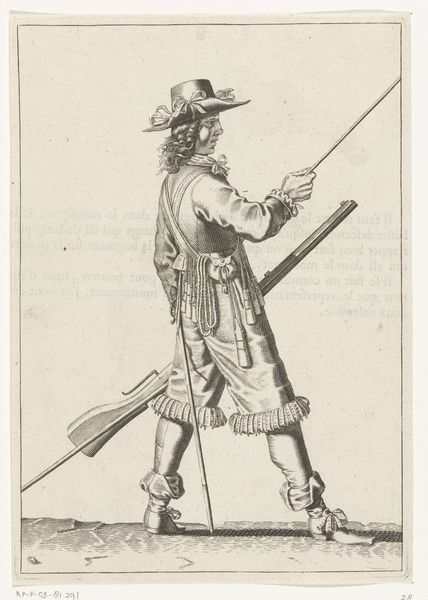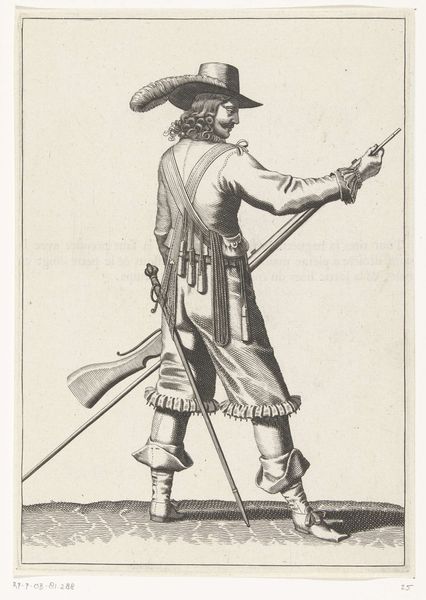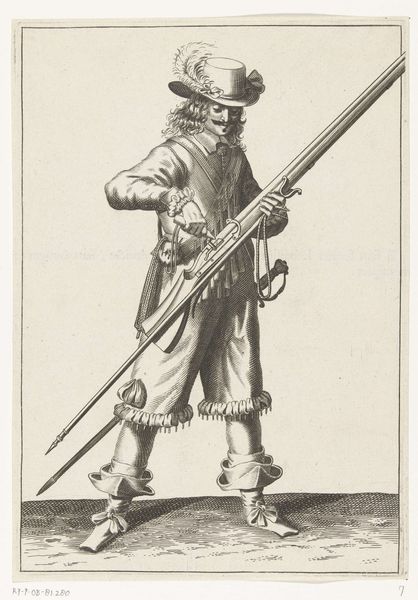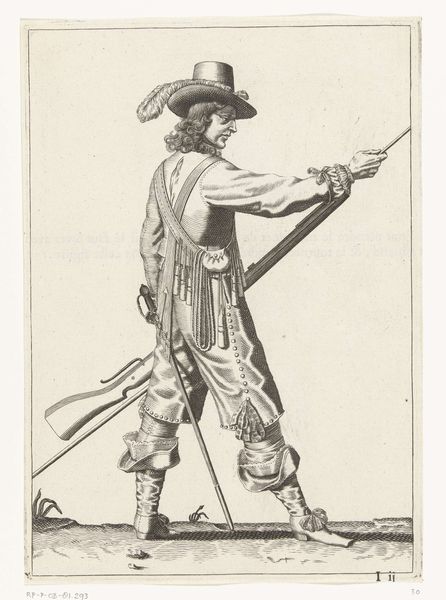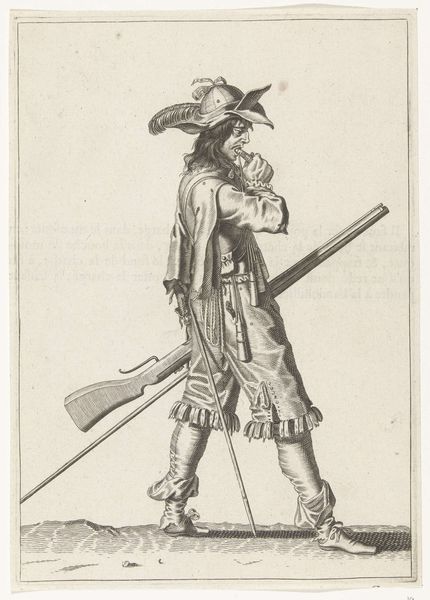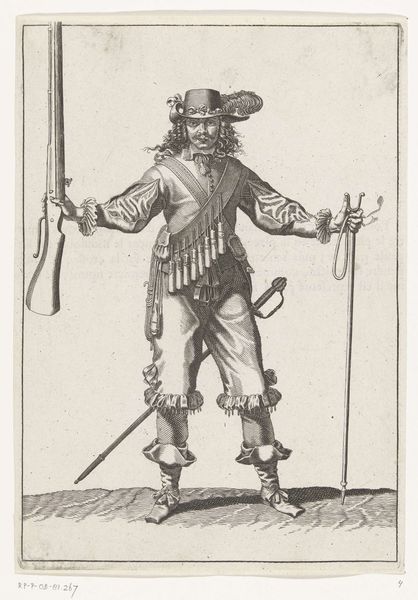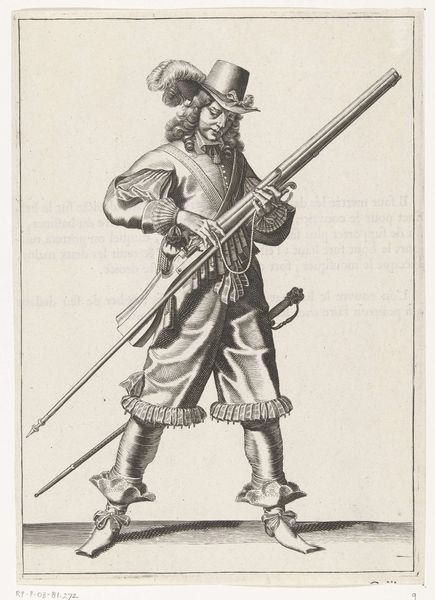
Soldaat die zijn musket op zijn linkerschouder draagt en zijn furket in zijn linkerhand vasthoudt, ca. 1645 1645 - 1647
0:00
0:00
print, engraving
#
portrait
#
weapon
#
baroque
# print
#
figuration
#
history-painting
#
engraving
Dimensions: height 235 mm, width 165 mm
Copyright: Rijks Museum: Open Domain
Curator: This engraving from around 1645-1647, by Petrus Rucholle, is titled "Soldier carrying his musket on his left shoulder and holding his fork in his left hand." It immediately gives me a peculiar sense of poised anticipation. Editor: Poised? I see a rather burdened figure. There’s a casualness to his stance that suggests he's been standing like that for hours. It strikes me as an exercise in prolonged…waiting. What is it about this print that fascinates you? Curator: I’m drawn to the symbolism. Consider how weapons embody not just power but anxiety about vulnerability. The weight of the musket on his shoulder, almost a gesture of nonchalance, belies the true burden. The fork in his hand–not as a weapon, but as a necessity for battle—demonstrates ingenuity, which seems poignant given the era's brutal realities. He almost makes weaponry seem pedestrian. Editor: Absolutely. This almost offhand manner likely reflected the changing roles of soldiers in the 17th century. Military service became less a matter of pure nobility and more a complex political role for those from varied social strata. Engravings like these democratized martial imagery. Instead of glorifying combat, this work humanizes the individual, inviting questions about duty and place within larger social structures. Curator: Exactly. The full weight of service etched in fine lines across the page, his weaponry as extensions of character, more than expressions of aggression. He stands ready and yet, something about his face suggests resignation. A cultural acceptance of a social burden, illustrated quite simply, really. Editor: Yes, I find myself seeing less grand narrative and instead questioning our collective appetite for militarization. He doesn't exactly invite admiration, but reflection. The print quietly probes into military figures as public servants, making art out of daily service. It’s a sobering reminder of art’s ability to both represent and reshape historical memory. Curator: Indeed. It moves from image of martial fortitude to an open dialogue. I'll walk away contemplating this print more than celebrating any victory.
Comments
No comments
Be the first to comment and join the conversation on the ultimate creative platform.
